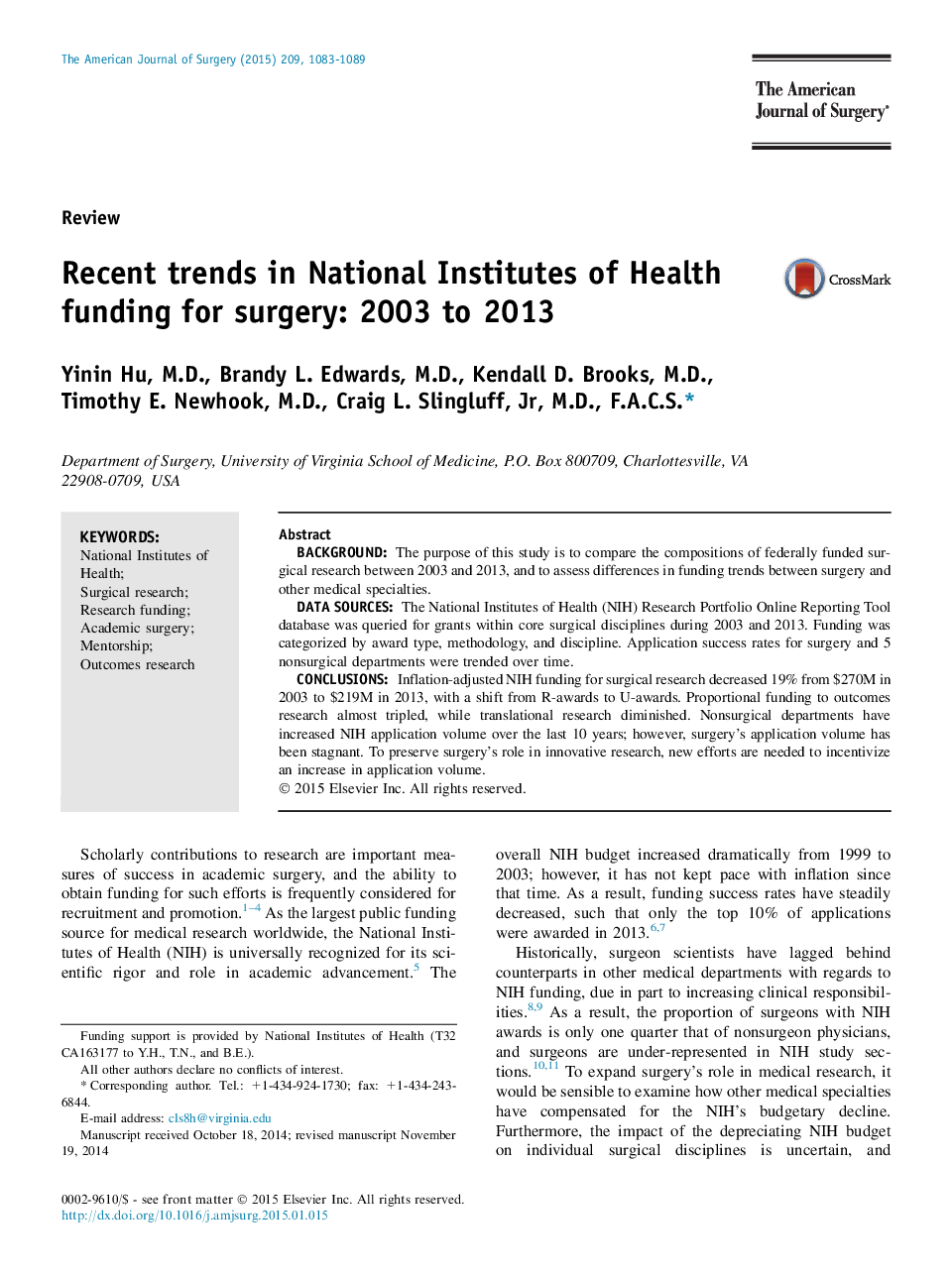| Article ID | Journal | Published Year | Pages | File Type |
|---|---|---|---|---|
| 6250762 | The American Journal of Surgery | 2015 | 7 Pages |
â¢We queried NIH Research Portfolio Online Reporting Tool to categorize surgical research funding.â¢Trends in research methodology and subject area (2003 and 2013) were examined.â¢Comparisons were made between surgery and nonsurgical departments.â¢Increasing NIH application rate should be a priority for all academic surgeons.
BackgroundThe purpose of this study is to compare the compositions of federally funded surgical research between 2003 and 2013, and to assess differences in funding trends between surgery and other medical specialties.Data SourcesThe National Institutes of Health (NIH) Research Portfolio Online Reporting Tool database was queried for grants within core surgical disciplines during 2003 and 2013. Funding was categorized by award type, methodology, and discipline. Application success rates for surgery and 5 nonsurgical departments were trended over time.ConclusionsInflation-adjusted NIH funding for surgical research decreased 19% from $270M in 2003 to $219M in 2013, with a shift from R-awards to U-awards. Proportional funding to outcomes research almost tripled, while translational research diminished. Nonsurgical departments have increased NIH application volume over the last 10Â years; however, surgery's application volume has been stagnant. To preserve surgery's role in innovative research, new efforts are needed to incentivize an increase in application volume.
